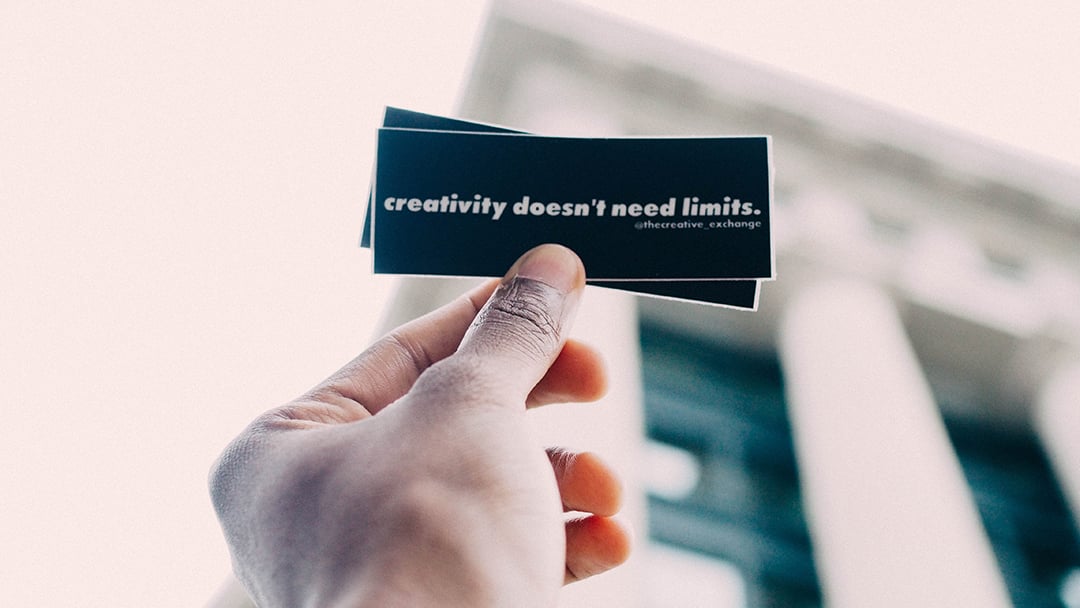Content Marketing is Growing, is Quality Content Lacking?
B2B marketers are making content marketing a higher priority and they feel they are doing a better job adjusting their strategy and actually creating...
3 min read
 Kevin Page
:
November 01, 2017
Kevin Page
:
November 01, 2017
When you want solid advice, who do you turn to? Probably a trusted friend. The same can be said when you are looking to make a purchase – big or small. We naturally gravitate to things our social circle has bought, tried, and shared. According to a Nielsen study, the most credible advertising comes from the people you know and trust.
If your customers are creating content online, you need to promote and share it. Why? Because when the review or experience comes from real people, it’s more authentic, genuine, and engaging. This automatically makes us trust it more.
Just last month, I attended HubSpot's Inbound Conference in Boston where I heard Tyler Anderson, CEO of Casual Fridays, speak about the importance of leveraging this content in a meaningful way. He shared a great example about a New York hotel that posted a user-generated photo of a young girl looking out the window at Central Park. If the hotel were to stage this photo, it would feel weird, but coming from a parent who stayed in the hotel, it reads more like a family-friendly hotel in a great location in the city.
A post shared by Condé Nast Traveller (@condenasttraveller) on
Once you start thinking about it, you will realize all the different ways user-generated content has been targeted to you and the impact it has made. For instance, if you are looking for products on West Elm, you can see how real people have used them in their own homes via Instagram posts. When you see a home similar to yours with the product looking spectacular, aren't you going to be more likely to buy it?
A post shared by west elm (@westelm) on
Similarly, product companies like Rent the Runway or Overtone allow you to see pictures of real people using their products and read their reviews. If someone looks good in a certain dress and has the same body type as you, you are more likely going to click that shopping cart button.
User-generated content is a powerful marketing tool that could significantly drive more purchasing decisions.
It's easy to build up a vision for your strategy, but sometimes capturing what you need is outside your capacity and budget. For instance, going back to the West Elm example, what if they have a strategy catering to those whose style preference is the currently popular modern farmhouse, but the budget for their photo shoot will only cover the rental of an urban space, which is also important. Some of West Elm's clients may be using their products in their farmhouses and sharing on social media. So it's all about utilizing those images by sharing on their website or social channels (and the user providing the content will also be pretty flattered as well).
You may be saying that the difference between the professional urban photo and the farmhouse photo is vastly different. And it's true, user-generated content photos are not professional quality, but remember that they are usually good photos that tell an intriguing story.
Have you ever said there aren't enough hours in a day or money in the budget? Well, in addition to all of the problems user-generated content fixes that we mentioned above, it also solves some of the issues related to time and budget. Because you aren't the one capturing the images, nor do you have to pay the people who are, you are able to grow your "marketing team" for free. That alone is a reason to give user-generated content a try.
Just look at how much free promotion Starbucks created with their recent #FallCups campaign. They encouraged people to use their cups to create their own masterpieces simply by creating cups with blank white circles.

User-generated content can't be done on a whim. It needs to be incorporated strategically into your overall marketing plan. It is too important to be a side thought. As marketers, it is easy to get super excited about something that shows so much promise that you immediately decide to do it on EVERY platform. I recommend starting with one. Go where you know your audience already hangs out or where you want your content to be shared. If you have an older audience, consider Twitter, but for that millennial crowd, Instagram is your best bet.

Find the customers who are the biggest fans of your products and have a story to tell. Ask them to become Ambassadors for your brand. Even though they will have to publicly acknowledge the partnership, audiences still see that as genuine.
Tyler drove home a key point here in his INBOUND session. It is vital to ask for permission. Giving attribution does not mean that it's permission. A person's photos are protected under copyright laws. Getting permission could be as simple as sending them a message, but it is an important step, not to be skipped, in the process.
There are also resources that help with delivering the right user-generated content to you. For instance, tack allows you to browse Instagram locations and hashtags, helps you request permission and keeps track of who says yes, and makes it easy for you to share on your website and social platforms.
So if you aren't using it today, I suggest doing some research and experimenting with user-generated content.

B2B marketers are making content marketing a higher priority and they feel they are doing a better job adjusting their strategy and actually creating...

Whether you're on your first cup of coffee for the morning or pushing through the last half hour of the day, there's nothing quite like an...
How long does it typically take you to write a 500-word blog post for your company? If your answer is less than an hour, congratulations! You're in...